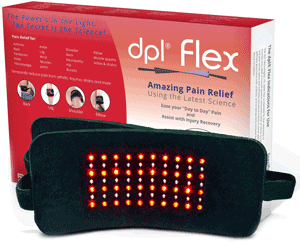This is the second post I’ve written about things which look like acne, and this time it’s about a condition called Pityrosporum Folliculitis (or PF for short). PF is also known as Malassezia folliculitis.
The first post was about seborrheic dermatitis, a very similar condition to PF. You can read it here.
Personally, I think it’s important to address things which look like acne, but aren’t acne, on an acne blog such as this.
Firstly, because a lot of acne sufferers who don’t actually have acne might easily cure their non-acne as soon as they realize they don’t have acne, and treat themselves accordingly.
This principle will apply if you actually have PF, since you might have been trying conventional acne treatments for years (they won’t do diddly-squat to help) but once you start to treat it correctly (see below) you should clear up in about a week.
It’s also because I get a lot of messages from guys with varying skin conditions, many of which bear only the slightest resemblance to “traditional” acne. But there is one symptom which is common to all skin conditions – and that is the knock on effect they have to a man’s confidence.
So it’s important to recognize when a skin condition isn’t actually acne.
As the ancient Chinese Army General Sun Tzu says in The Art of War: Know thine enemy.
The focus of this post is Pityrosporum Folliculitis. It’s a skin condition often confused with non-inflammatory acne and closed comedones, because of its appearance and the fact that it’s more common in people with very oily skin.
PF tends to manifest itself on the torso – the chest, shoulders, back and occasionally the upper arms – just like bacne. It’s also possible (but less common) for PF to affect the face.
When it does, small, pink or flesh-colored bumps appear on the forehead, temples, nose, cheeks and around the mouth – basically, the oiliest areas (more on this later).
These bumps have the appearance of tiny closed comedones – like clogged pores, or rough skin. If you try to pick them, often a small grainy substance comes out or a clear or yellowish liquid will ooze from the pimple.
You can also get larger whiteheads which look virtually identical to those found in less severe cases of acne, hence the difficulty in diagnosing pityrosporum folliculitis.
One key difference between acne and PF is itchiness.
PF is almost always an itchy skin condition, which gets worse when your skin is at its oiliest – such as in the evening, or when you’ve been exercising or sat in the sun all afternoon. (Or when you’ve eaten too much junk food…).
The presence of the yeast which causes PF also disrupts normal skin cell renewal, leading to white flakes which fall off the skin (like facial dandruff). Scalp dandruff is caused by the same yeast.
So if you have lots of small, acne-like bumps on your T-zone areas, along with shoulder/back/chest acne and you notice it itches a lot when you haven’t washed your face for a few hours… you might have pityrosporum folliculitis.
And if you suffer from dandruff, PF becomes an even more likely diagnosis – especially if conventional acne treatments have been unsuccessful for you.
As we’ll find out in a moment, normal acne treatments can do more harm than good for PF sufferers.
What causes Pityrosporum Folliculitis?
PF occurs on the face and back because these areas have more sebaceous glands and are therefore more oily. Genetics also plays a part in how oily your skin gets, and hence your risk of getting PF.
This oil feeds a species of “commensal” yeast called Malassezia.
Commensal means it is part of our body’s own ecosystem – Malassezia is found living on the skin of just about every human being on the planet.
If you’re wondering, Malassezia used to be called Pityrosporum. I like the good old days, so I’m stubbornly sticking with the name Pityrosporum folliculitis.
Most people don’t react to the presence of Malassezia, and their immune system keeps the yeast at bay without them even noticing.
However, in people with PF the Malassezia yeast cells invade the hair follicles and cause an inflamed or allergic reaction, leading to acne-like pimples.
The reasons some people experience this reaction vary – it could be because of unlucky genetics, or blood sugar problems, or a depressed immune system (such as in people suffering stress, or illness, or who are much too fat…).
A cautionary tale with a happy ending…
This means there is another way to find out if you have PF rather than acne… but it’s certainly not one I advise.
A guy recently emailed me about PF and discovered he had this condition when he used olive oil to cleanse his face, as part of the “Oil Cleansing Method” popular on some acne forums.
The Malassezia yeast which causes PF loves oil – it’s their primary source of nutrition. So this guy’s condition exploded within about 24 hours, leaving him in a bit of a mess.
But because of this monumental faux pas he did at least have a positive diagnosis. Thankfully, a week or so afterwards, he messaged me again to say he’d made very good progress clearing his skin, using an antifungal shampoo I’m about to tell you about.
How to treat of Pityrosporum Folliculitis
The good news is that treatment is almost always successful once PF has been confirmed.
As with seborrheic dermatitis, you CANNOT ignore personal hygiene with a condition like this.
Not that that’s a bad thing, but you really must make sure you see to your ablutions every single day. No skipping your shower one day because you can’t be bothered, or not washing your hair and shaving because it’s too much effort.
Rule number one for successful PF treatment is: Attend to basic hygiene every single day.
It’s also important to wear loose-fitting cotton clothing, and keep as cool and sweat-free as you can. This isn’t an excuse not to exercise! It means you must make sure you have a cool shower once you’ve finished running around and lifting iron.
And do everything you can to minimise oily skin, so you effectively starve the yeast of nutrition.
As for your treatment options…
Chemical treatment will also be required for pityrosporum folliculitis – it’s not a condition which will get better by itself.
Treatments for PF unsurprisingly revolve around anti-fungal active ingredients.
Just like with seb derm, in my opinion good old Nizoral shampoo (containing ketoconazole) is the absolute best.
I actually have mild seborrheic dermatitis, which is treated in the same way as PF. Now it’s under control, I use Nizoral on a twice weekly basis to keep it at bay.
The way to use Nizoral shampoo for pityrosporum folliculitis is:
- Get into the shower. Make sure it’s cold so as not to exacerbate oily skin problems.
- Wet your face and fair under the water, then lather up a dime-sized dollop of Nizoral in your hands.
- Proceed to rub this lather over basically your entire head. Everything from the neck up must be covered in Nizoral bubbles (except your eyes, ears, nose and mouth, for obvious reasons. Believe me when I say you won’t get Nizoral in your eye more than once).
- Leave it on for 3 to 5 minutes – this is important, because the Nizoral needs time to penetrate the skin layers and work its magic. However, the first few times you use it, build up from 30 seconds, to a minute, to two minutes and so on. Stop if you get any adverse reactions.
- You’ll probably want to switch the water off during this time, since even for my hardy soul 5 minutes under a cold shower is a bit much…
- Once it’s soaked in, thoroughly rinse it off and finish your shower.
Ketoconazole remains at effective concentrations in the skin for at least 3 days, so those of you who are concerned that shampooing your face is too harsh might be relieved to know you don’t need to use it daily.
Two to three times a week is sufficient, and you may find you have to continue sporadic treatment for a very long period of time, if not forever.
There are a couple of other active ingredients which are good for pityrosporum folliculitis, but not as good as Nizoral.
Zinc is an antifungal and can be found in either Head & Shoulders shampoo (used as above) or a ZNP soap bar. Mandelic acid has also been shown to be effective against Malassezia yeast and is found in cleansing products like Vivant Skincare Mandelic Acid Wash.
Oral antifungals (like ketoconazole tablets) may be prescribed for severe and/or widespread cases. These antifungals are potentially damaging to the liver so only take these under the prescription and supervision of a healthcare professional.
You also need to make sure you’re not accidentally feeding the yeasties by slathering your face with oily creams, such as moisturizers and sunscreens – the lighter and better absorbed the product, the better. Ideally, if you can get away without using a moisturizer, do so.
Why acne treatments will not work
Simply put – because pityrosporum folliculitis is not acne!
Products designed to prevent acne often focus on preventing pores from clogging. This includes salicylic acid, benzoyl peroxide, and topical retinoids, all of which are generally ineffective for PF.
The fungus responsible for PF inhabits and inflames your hair follicles and causes a reaction which looks like acne. There is nothing clogging the pore as such – the problem is the yeast inside the follicle.
And antibiotics prescribed for acne (such as Duac) are about the worst thing you can possibly use for PF, since by wiping out the bacteria on your skin you’re giving the yeast a huge advantage. With no bacteria competing for “food” (your skin oils), the yeast will spread and spread, as will your PF.
If you have pityrosporum folliculitis you’ll need to steer well clear of acne treatments.
——————–
Again, it’s important you make sure you’re treating the correct condition, otherwise at best your efforts will be ineffective and at worst, they could even be doing more harm than good.
Thankfully, Pityrosporum folliculitis is simple: it’s a fungal infection of the hair follicles, found in oily areas of skin, caused by yeast cells which can be killed with good hygiene and antifungal topical products.
Everything’s easy when you know the answer, isn’t it…


